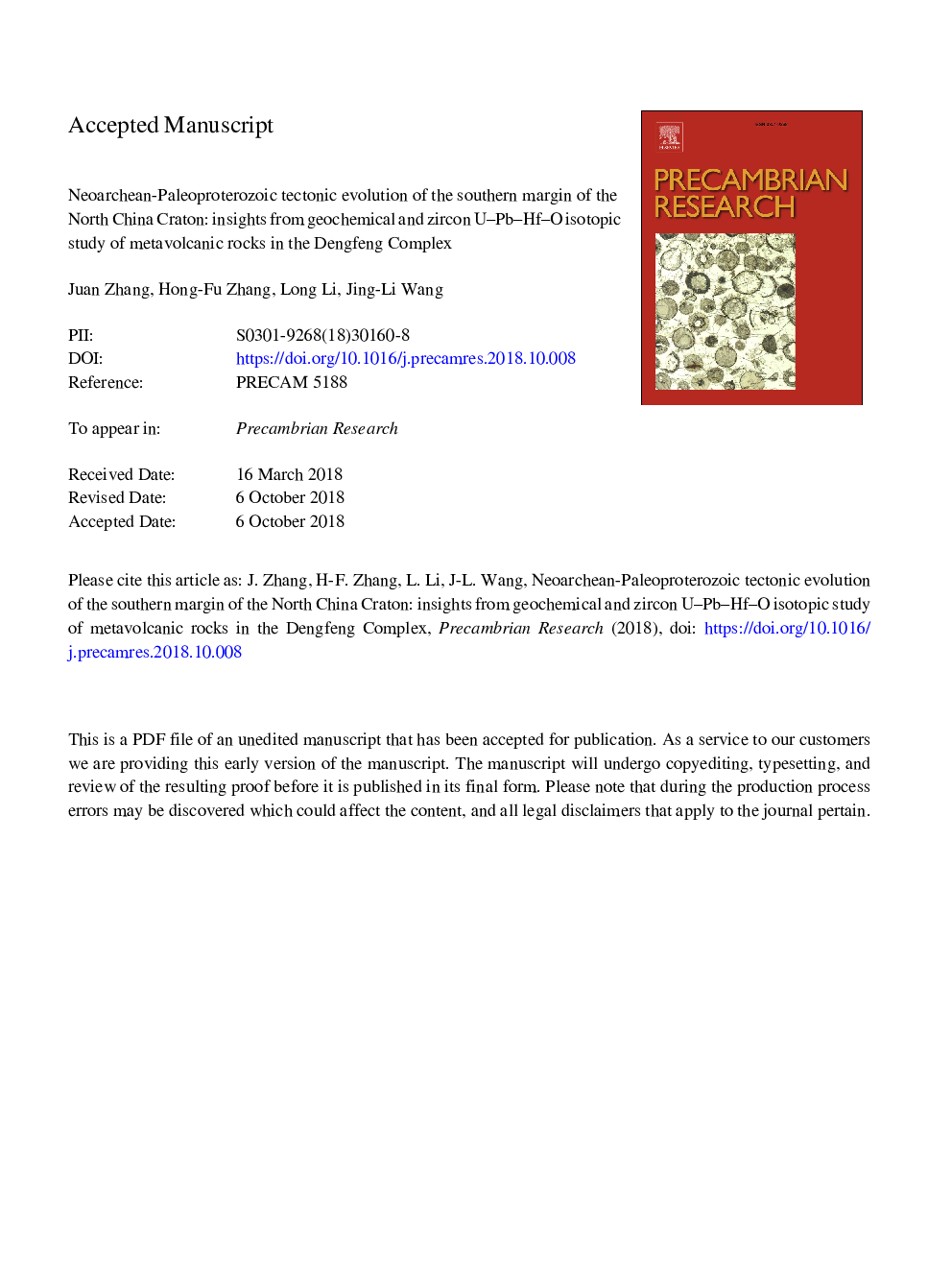| Article ID | Journal | Published Year | Pages | File Type |
|---|---|---|---|---|
| 11263210 | Precambrian Research | 2018 | 61 Pages |
Abstract
The studied amphibolites are characterized by high Mg#, and enrichments in LREE, Rb, K and Pb. Their zircons show positive εHf(t) values and mostly high δ18O values (6.0-7.5â°). All these features indicate that they were most likely derived from a mantle wedge that was modified by components from low-temperature altered oceanic crust. SIMS zircon U-Pb isotopic dating reveals that the protoliths of the amphibolites were emplaced from as early as 2.83â¯Ga to 2.51â¯Ga, and underwent two metamorphic events at 2.48â¯Ga and 1.92â¯Ga, respectively. The studied felsic metavolcanic rocks are characterized by low Mg# values, enrichments in LREE, K, Rb and Pb, depletions in Nb, Ta and Ti, and various negative Eu anomalies. Their zircons display positive εHf(t) and mantle-like δ18O values. All these features suggest that they were mainly derived from partial melting of juvenile crustal components. SIMS zircon U-Pb isotopic dating indicates the felsic metavolcanic rocks erupted at 2.54-2.53â¯Ga. No zircon overgrowth was observed in these volcanic rocks during later metamorphic events. Based on these new data, we proposed a new tectonic model for the Neoarchean tectonic evolution of the southern margin of the NCC with tight constraints on the timing from subduction (at least 2.54â¯Ga) to collision (2.48â¯Ga).
Related Topics
Physical Sciences and Engineering
Earth and Planetary Sciences
Geochemistry and Petrology
Authors
Juan Zhang, Hong-Fu Zhang, Long Li, Jing-Li Wang,
